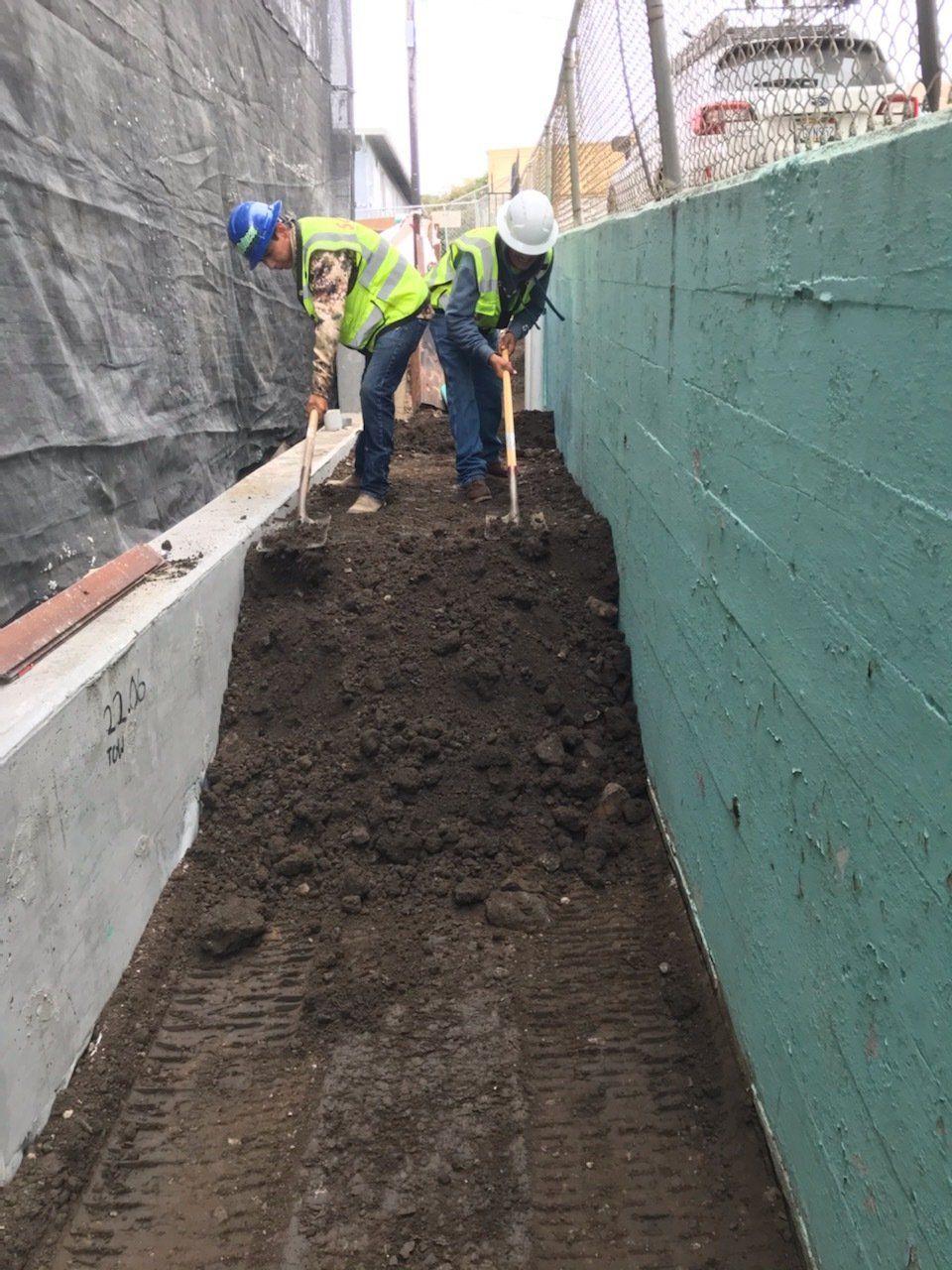Demolition
Professional Demolition Services in Santa Cruz County
-
Hardscape
In a landscape design, there are two main subcategories. The first component is the softscape, which refers to all the living and organic elements in a landscape. These can be the trees, flowers, or grass on a lawn. The second component is the Hardscape. Hardscape is a design element that is solid and unchanging. These are all the non-living elements in a landscape, such as a stone wall, brick patio, outdoor kitchen, decks, and driveways.
Hard landscaping involves projects that cover the entirety of the yard, these are projects that have to be done before working on the softscape. Hardscape changes the features and foundations of an area. Only when the area has been fixed can softscape features be installed. The key feature of hard landscaping is ensuring that water isn’t a problem. For the most part, an area that hasn’t had its hardscape installed can lead to water absorption problems, especially during heavy rains and snowfall. Water irrigation and absorption systems are installed during the hard landscaping process.
In urban planning, hardscapes can include larger projects, such as paved roads, driveways, large foundations, public pools, and ponds. Although it might sound counterintuitive, water features are also considered hardscape projects. Hardscaping allows landscaping features that would otherwise be impossible because of soil erosion or water absorption.
-
Demolition
Demolition is the science of safely and efficiently tearing down landscapes or hardscapes and other artificial structures. Demolition is different from deconstruction, which involves taking a building apart while still preserving some of its elements in order to reuse them. For smaller houses and buildings, demolition is a rather easy process. The building can be brought down manually or mechanically using large pieces of equipment such as cranes, bulldozers, and excavation equipment. Larger buildings require the use of a wrecking ball. Wrecking balls are very effective but are harder to control and may be less efficient than other methods of demolition.
Before any demolition takes place, many steps must be carried out beforehand. Hazardous materials must be removed, permits must be obtained, notifications must be submitted, utilities must be disconnected, and rodent baiting and safety measures must be done. The demolition process is as follows:
For one to two-story buildings, a hydraulic excavator is used to topple over the building. The building is brought down while controlling the direction and manner in which it falls.
The demolition project head is in charge of determining where undermining must be done so that the building will be pulled in the desired direction and manner.
Most of the time, walls are undermined at the building or home’s base, but this differs from project to project and depends on the design of the building. Safety and cleanup considerations are taken into account prior to demolition.
For larger projects, such as large buildings, chimneys, and bridges, building implosion is done with the use of explosives. Imploding is a very fast process and the collapse of the structure only takes seconds. The demolition expert has to ensure that the structure falls on its own area so as not to damage any nearby structures, which is extremely important in dense urban areas. Implosion is a very efficient method, however, there are a lot of safety issues that may occur if not done properly. This makes controlled implosion a last resort when other methods are too impractical or expensive. It also takes several weeks or months to prepare a building for controlled implosion. Some materials that can form deadly projectiles, such as glass, are removed. The goal is to use as few explosives as possible, so only a few floors contain explosives. The most time-consuming process is the clean-up of the site after demolition, as there is a large amount of debris that has to be loaded and hauled away.
-
Asphalt Removal
When you start to notice that your pavement is cracked, uneven, or has started forming potholes, you may need to have it removed and replaced. Asphalt pavement is strong, durable, and built to last which is why it’s usually the pavement of choice and is commonly used in pathways, roads, and parking lots. However, there are still instances where asphalt pavement can get damaged, especially if it isn’t maintained properly. Some factors that contribute to the deterioration of asphalt pavement are changes in temperature, UV rays, rainfall, snowfall, oil and gasoline spills, and temperature changes. Water is asphalt’s worst enemy, so when water seeps into the pavement cracks, it can start to degrade the ground beneath which causes uneven surfaces, potholes, and other major damages.
Asphalt removal must be done by professionals. Here are the common steps of asphalt removal:
- We will first mark the areas that need to be removed. Then, your pavement will be saw cut for complete removal.
- Asphalt is then removed from the damaged area using machinery, the asphalt is then hauled away.
- After asphalt removal, the granular base underneath the removed asphalt will be graded and prepared for compacting. Further inspection will be done to make sure that there aren’t any damages done to the granular base.
- The granular base will then be leveled and compacted which makes it ready for new asphalt to be applied.
-
Concrete Removal
Concrete demolition is a pretty simple and straightforward process if done right. There are several conditions that call for concrete removal and replacement. These conditions may call for patching or resurfacing, which is usually just a short-term fix. Under these conditions, patching your concrete will be a waste of money as it would eventually need to still be repaired further or completely replaced. These conditions are as follows:
There are deep, widespread cracks in your concrete. These may be due to the weight of large trucks, improper preparation of concrete, erosion of concrete, and so on.
The concrete slabs have sunk which may occur when the subgrade was not properly prepared. Rainwater or sprinkler water may go underneath the concrete and will be more susceptible to sinking.
The concrete slabs show signs of frost heave. Frost heave pertains to the upward or outward movement of the ground surface which is caused by the formation of ice in the soil. This is very common in cold climate areas.
There is too much spalling or pitting on the surface of your concrete slabs.
If you notice that these conditions apply to your concrete, it is best to contact a professional for concrete removal. Here are the common steps to concrete demolition:
Safety checks are done before beginning concrete demolition. Our professionals disconnect electricity, gas, and water utilities. They perform structural tests and establish protective signs and barriers.
With a sledgehammer or jackhammer, concrete is then broken down into smaller pieces.
If concrete is reinforced with steel, an angle grinder is used to cut through metal.
Old concrete is then disposed of and brought to a recycling facility.
Santa Cruz Underground and Paving
Santa Cruz's best paving and excavating contractor since 2005
Copyright. Santa Cruz Underground and Paving. All Rights Reserved.


